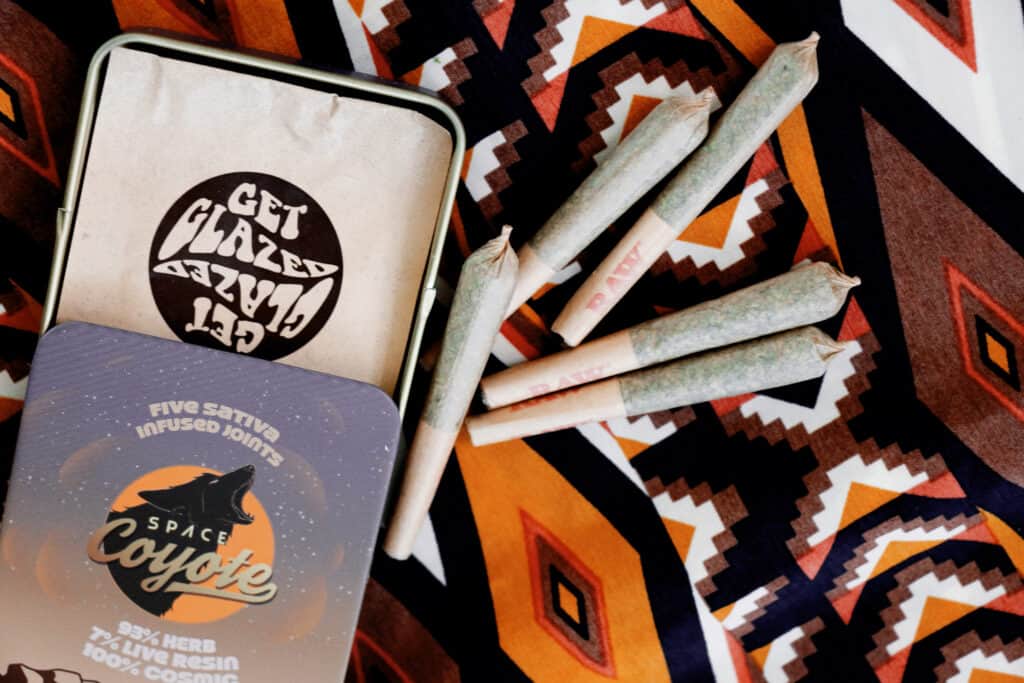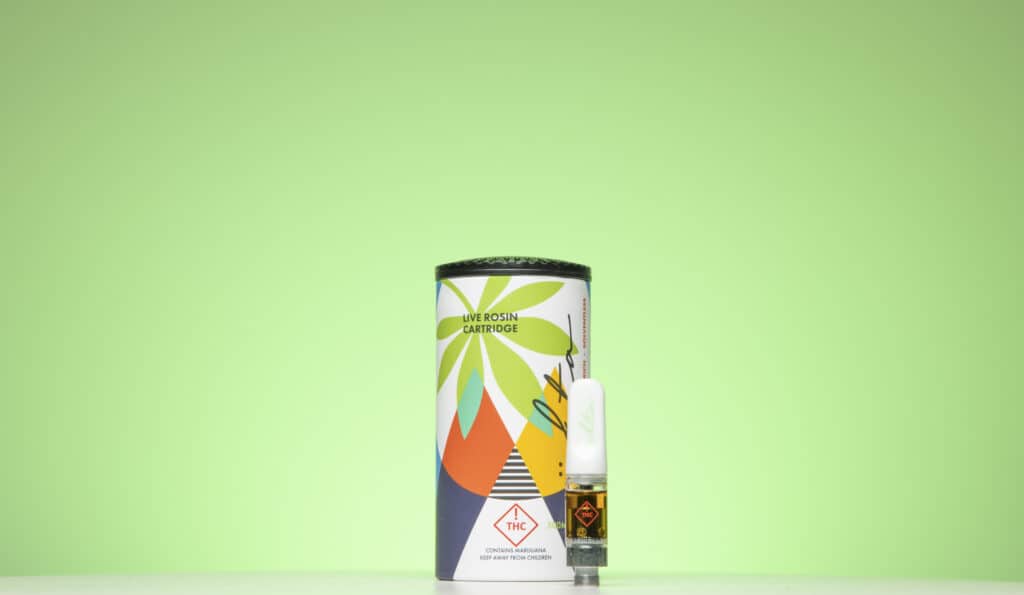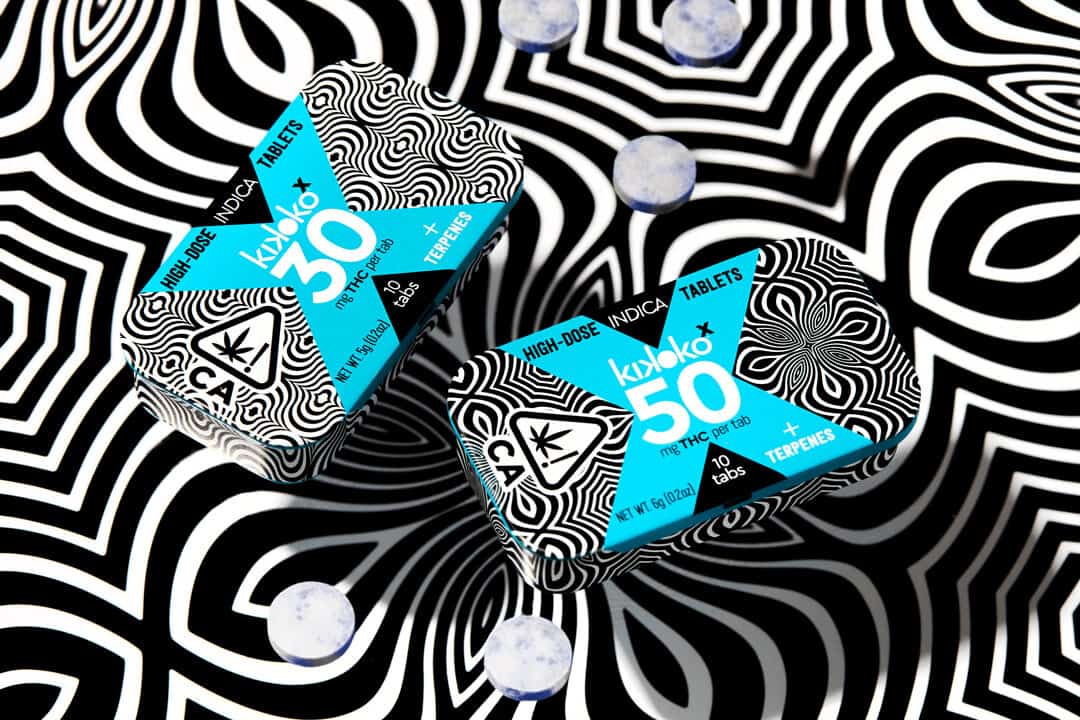Cannabis businesses often have a complicated relationship with their best customers. As in other vice industries, a substantial majority of cannabis revenue derives from a relatively small number of heavy consumers. But many prominent brands see themselves as mission driven organizations striving to reduce the stigma surrounding cannabis and normalize its use. The way they usually do so is by trying to distance themselves from pothead stereotypes and market low-potency products as components of a healthy lifestyle.
However, with heavy users still accounting for most sales, a number of brands are going in the other direction, and trying to win them over. For example, California brand Space Coyote, best known for its concentrate-infused pre-rolls, bills itself as “the most potent and delicious weed.”
“[CEO] Scott [Sundvor] and I both consider ourselves stoners and are very successful people,” co-founder Libby Cooper, who was previously creative director at delivery service Eaze, said. “Smoking weed has never hindered us.”
“We’re all about celebrating the stoner,” she added, using a word many cannabis exes have eliminated from their vocabulary. But the word reflects Cooper’s personal bias and business goals.


Selling to heavier users is “more of a guaranteed win,” Cooper said. “When you have a product that takes lots of education or is new it’s very expensive to get new consumers on board or keep customers around.” But Space Coyote’s consumers don’t need to be educated on how to smoke a joint and the company can focus on branding and sales.
“We also look at the data,” CEO Sundvor said. Brands targeting canna-curious consumers with CBD, beverages, and microdose products may interest journalists, “But what makes the news isn’t indicative of what the real market is.” According to data he shared, flower, prerolls, vapes and extracts — products aimed at existing and often heavy consumers — account for 85% of the California market, with edibles accounting for another 10%. “The market is dominated by people buying weed to get high,” he said.

Cooper thinks that non-smokeable consumer products are the future–but not the present. “I love everybody’s microdose mission,” she said, but called it a “very future focussed business aspiration.”
“With every company in that low dose realm you can look at the business motivation and the personal motivation and whether those two intersect,” Cooper said. “Maybe there is a huge payoff in the future.”
Whatever happens, she believes “The stoner is always going to be the biggest category.”
“I think ultimately everyone is going to consume,” she said. But many of them will consume a lot less. “The stoner is a very quality consumer.” Sundover added, “I would rather have one consumer that spends $100 a week than 10 consumers who spend $10 a week.”
Despite Space Coyote’s firm conviction that consumers care a lot more about THC content than rare terpene profiles, the company is working on a project which will require more consumer education in a more on-brand way.
The company’s forthcoming Sativa Preservation Society will highlight landrace sativa strains, which they say provide an extraordinary high, but do not have especially high THC content.
High is no longer a four letter word
Of course, given the dynamics of the market, Space Coyote isn’t the only brand which sees value in heavy users. The Clear was one of the first manufacturers to bring distillate — the purified THC oil found in vapes — to dispensary shelves and has since been building a national brand for high tolerance consumers.
“High tolerance consumers are educated consumers,” said Patrick Haske, the brand’s director of marketing. “They want it to be safe and consistent.” The company tries to appeal to them, in part, by focusing on safety. For example, Colorado will soon begin requiring products’ vapor plumes to be tested and The Clear already does it, Haske said.
The company also adds labels to products which aim to both caution inexperienced users and attract heavier consumers. He also believes having a “spectrum” of high-potency SKUs is a way to attract these consumers.
Elizabeth Ashford, vice president of communications and public affairs at delivery service Eaze, said that while its education efforts are focused primarily on cannabis neophytes, it appeals to high tolerance consumers by offering “an aggressive discount strategy.”
“Eaze was at the forefront of educating a large number of people about cannabis,” Ashford said, but experienced users don’t necessarily need or want that kind of content. “It would be inappropriate to educate them about cannabis. They led the movement,” Ashford said. “The best way to support them is to have what they want at a discount.”
“The market is very driven by potency,” said Os Graziani Lemoine, creative director for MSO Fluent, which has dispensaries in Florida. The company offers a high-end Black line for consumers who seek out potency. “They want to see that number around 90%,” he said.
However, he drew a distinction between high potency and high tolerance. Many of the consumers who seek out the Black products are looking for fast relief for serious medical conditions without constantly pulling on their pens. “I don’t consider them heavy users,” he said.
Stereotypically, heavy cannabis users are men, but that’s no longer actually the case. According to a report from tech and compliance firm Akerna, women accounted for 38.2% of cannabis spending in the first half of 2021, up from 35% in 2019, and their three favorite product categories are flower, vape pens, and concentrates.

Akta, a concentrate and vape pen producer based in Colorado’s western slope, sees a great deal of opportunity with female consumers. The company’s branding is more feminine than many of its competitors who go for an “edgier” look, co-founder and COO Blair Kralick said. Its products are also solventless, which appeals to consumers who are wary of putting chemicals in their bodies. “Anecdotal evidence suggests there are a lot more dabbing women out there than you’d expect,” Kralick said, though they tend to be more discreet about it.

Much of the effort to attract new cannabis users has been about attracting new female cannabis users. This in large part accounts for the proliferation of wellness-oriented brands, many of which offer low dose products. One such company is California brand Kikoko, which promotes its products as helping with sleep, focus, mood and other mood states, and has released a line of high-potency Xtabs.
The company launched these edibles, which contain 30 and 50 mg of THC, when their customers demanded stronger products. They may add a 100 mg pill. “We recognized we were not servicing the needs, and wellness can require higher doses,” co-founder and co-CEO Amanda Jones said.
“If you want to get ripplingly high by swallowing a pill, this will do that for you,” Jones said.
“But some people are perfectly capable of functioning on that high a dose.” She says she was seeing consumers whodidn’t want to smoke and didn’t like dabbing so they were spending lots of money on low-dose edibles. “We felt we could fill that gap with a value product,” she said.






3 thoughts on “Why “stoner” shouldn’t be a dirty word and how brands are courting high tolerance consumers”
Pingback: Why “stoner” shouldn’t be a dirty word and how brands are courting high tolerance consumers - äkta
Pingback: Hava Gardens | Why “stoner” shouldn’t be a dirty word and how brands are courting high tolerance consumers
Pingback: Cannabis Consumer Data Shows That Most Consumers Can Be Classified